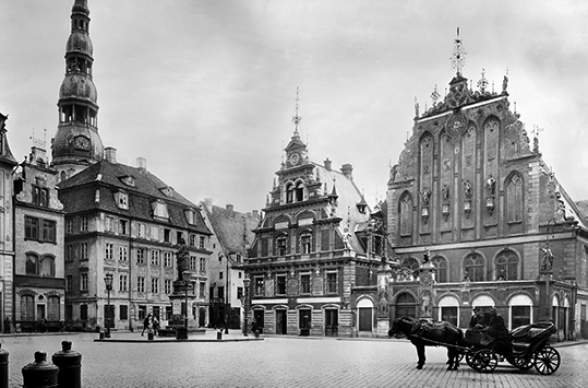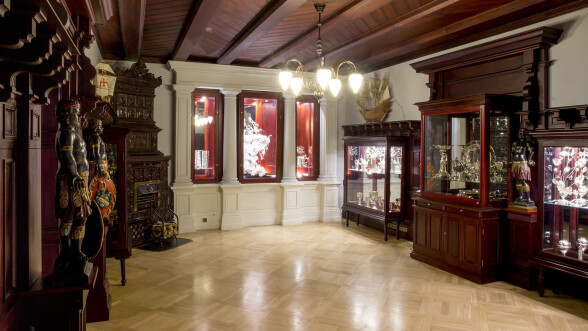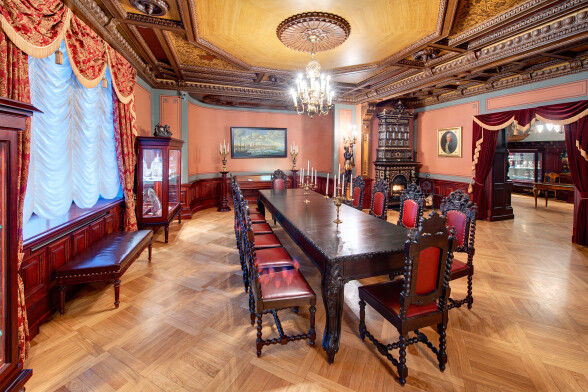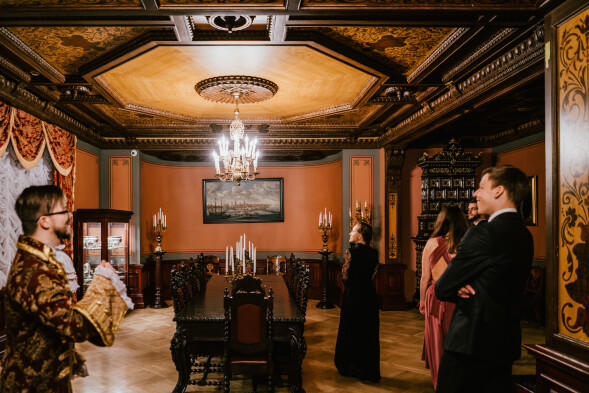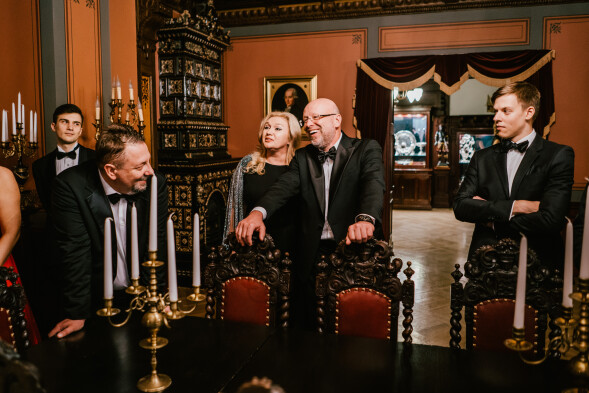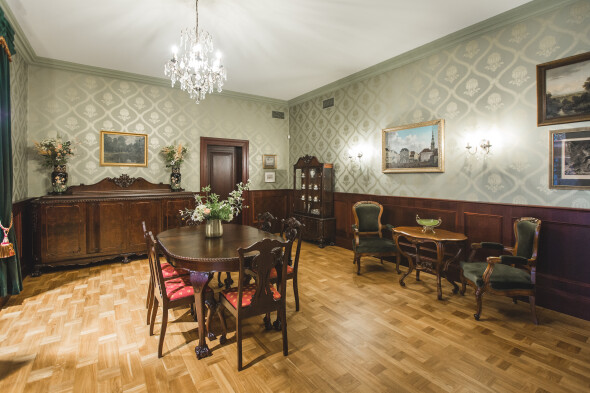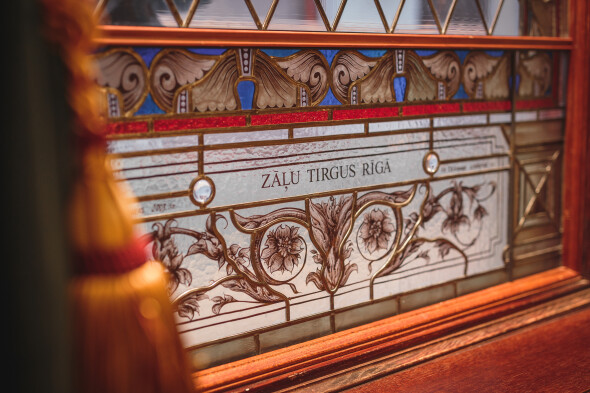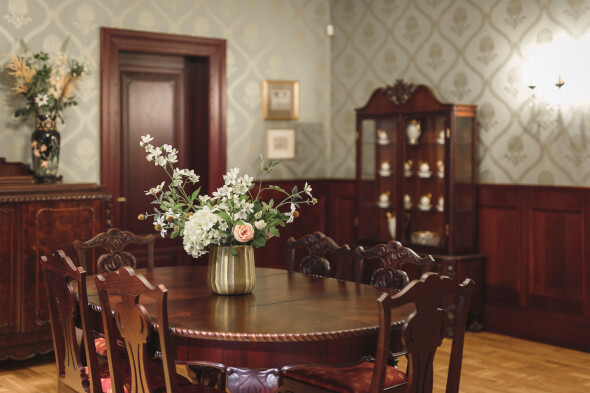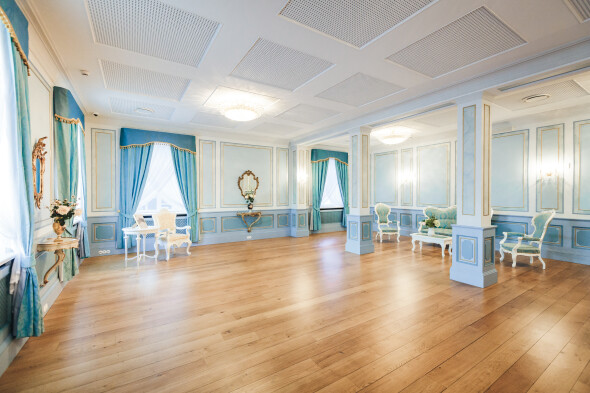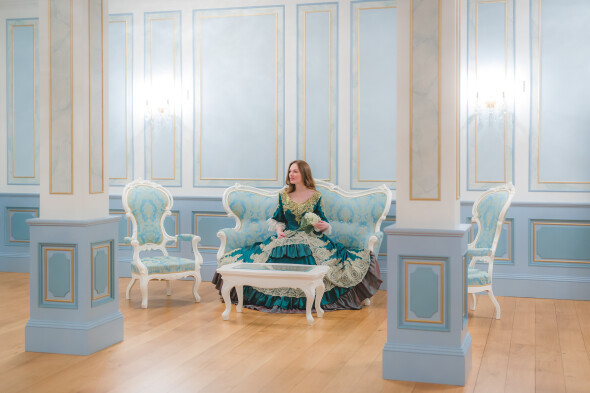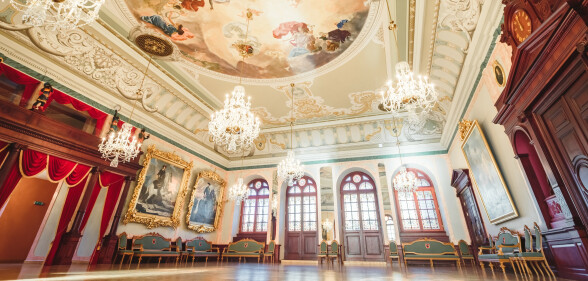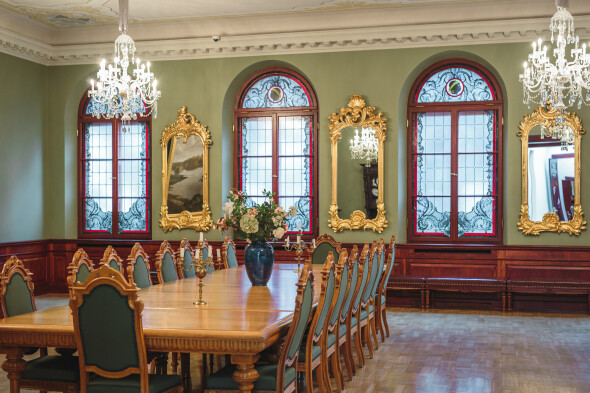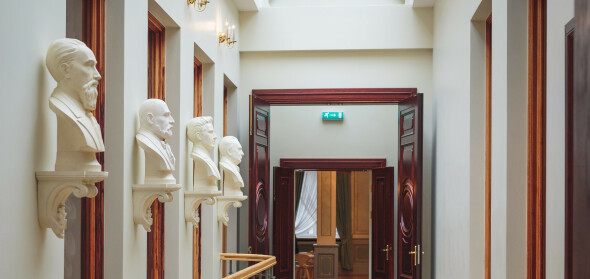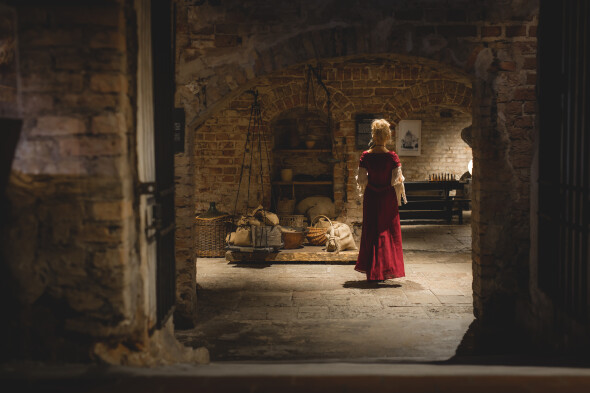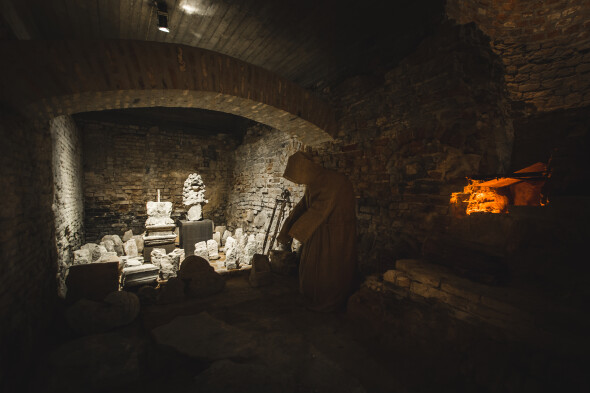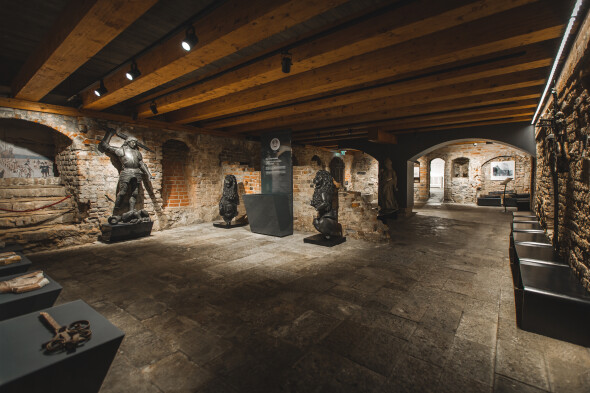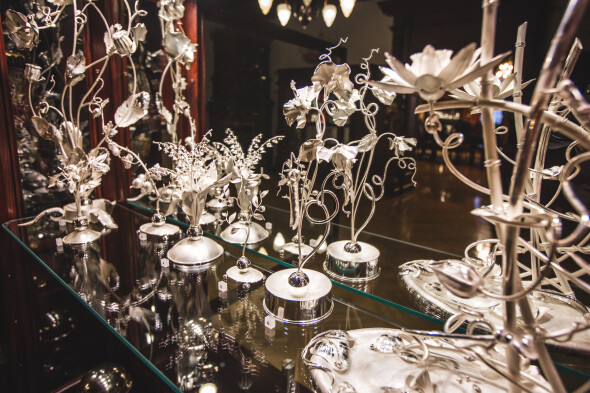History
House of the Black Heads, initially called the New House, was built in 1334. It has been rebuilt many times beginning with 1522, when the door-side stones were placed at the entrance, until the end of 19 century when statues of lions were placed above the entrance and the statue of St. George appeared at the corner of extension.
Historical cabinets
- The historical cabinets of the House of the Black Heads have been set up in the style of a 19th century interior.
- The meetings of the council of brotherhood are said to have taken place in the cabinets, here the most important decisions of the association were adopted and cash reports made.
The Salon
The Salon is the smallest hall of the House of the Black Heads. Its interior was restored in 2020 in the style characteristic to the second half of the 19th century and the beginning of the 20th century. No historical records exist that would provide evidence that there was once a Salon hall in the House of the Black Heads, but according to the old floor plan, it is known that there was a serving room here.
Blue Guard hall
In 1720, merchant journeymen founded a new cavalrymen’s company, which was named the Blue Landlord Company or the Blue Guard due to the light blue, silver adorned uniforms. The Guards mainly participated in processions welcoming and escorting nobles, however, after Napoleon’s invasion of Russia they regained their military importance. During the 1880s, the guards of Riga were disbanded.
Celebration hall
The historical Lübeck hall and the luxurious Celebration hall are available for viewing, as well as the composers’ gallery.
- The royal portraits placed in exquisite carved wooden frames and displayed in the Celebration hall have witnessed concerts of renowned musicians.
Medieval cellars
- The cellars were constructed together with the main building in 1334 and are the only parts of the building that have survived to the present day in their original historical form.
- The cellars once served as a storage area used by merchants. The brotherhood's wine reserves and treasures brought by merchants, such as grain, leathers, flax, honey, wax, and other goods, are said to have been stored here.
Silver collection
The contemporary silver collection of the House of the Black Heads can be viewed in the historical cabinets.
- It is comprised of gifted and purchased silver objects.
- This is one of the largest silver collections in the Baltic States.
The wealthiest blackheads gifted silver goblets, dinner sets, candleholders and other goods made from silver to their own house and their churches.
